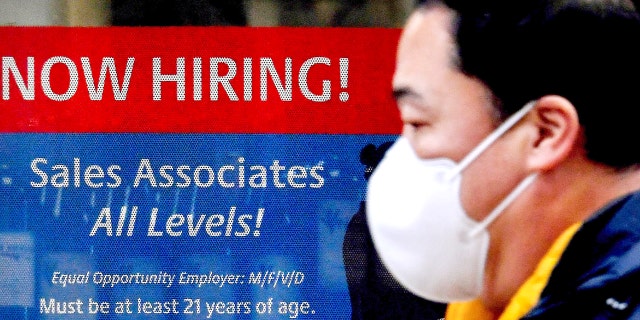Experts project record low poverty in 2021 resulting from COVID relief

Ben Carson on how to reduce likelihood of living in poverty
Former HUD secretary discusses steps to closing the wealth gap on ‘Your World’
Researchers are projecting a record-low U.S. poverty rate in 2021, and they’re pointing to federal COVID-19 relief as the driving factor behind the shift.
The Census Bureau last September reported that the county’s poverty rate in 2019 hit a record low of 10.5%, with 4.2 million fewer impoverished people than in the previous year, when the poverty rate was 11.8%.
Fellows at the Urban Institute, a liberal think tank, estimate that the poverty rate in 2018 was higher at 13.9% based on the Supplemental Poverty Measure, and they also estimate that number will be cut in half this year.
“These are really large reductions in poverty — the largest short-term reductions we’ve seen,” Urban Institute senior fellow Laura Wheaton, who authored the report fellows Linda Giannarelli and Ilham Dehry, told The New York Times.
Because the checks have already been dolled out and virus-driven increases in food stamps and unemployment benefits are nearing their end, researchers also estimate that the significant poverty reduction may be short-lived.
The Institute previously estimated that President Biden’s $1.9 trillion American Rescue Plan Act would reduce the poverty rate to 8.7%, but the think tank’s latest estimate puts the poverty rate at 7.7% this year — a reduction of about 20 million people — due to “improvements in the economy” based on “state-level information on pandemic-related policies.”
The poverty rate for children will fall from more than 30% to 5.6%; the rate for adults under 64 will drop to 8.1%; and the rate for people over 65 will be reduced to 9.2%. The rate for Black and Hispanic Americans (9.2% and 11.8%, respectively) will be higher than the rate for white and Asian Americans and Pacific Islanders (5.8% and 10.8%, respectively), researchers found.
A man walks past a "Now Hiring" sign in front of a store on December 1, 2020 in Arlington, Virginia. (Photo by OLIVIER DOULIERY/AFP via Getty Images)
Federal stimulus checks had a larger impact on poverty than any other assistance programs, such as SNAP benefits and child tax credits, according to researchers.
Other researchers are not surprised by the impact of federal aid and fear the record-low poverty rate estimates are unsustainable over time.
“There’s no doubt that by shoveling trillions of dollars to the poor, you can reduce poverty,” Robert Rector, a fellow at the Heritage Foundation, a conservative think tank, told the Times. “But that’s not efficient and it’s not good for the poor because it produces social marginalization. You want policies that encourage work and marriage, not undermine it.”
The Government Accountability Office (GAO) estimates that more than $1 trillion in federal coronavirus funds have not been spent.
The $1 trillion figure includes $156 billion approved by the Department of Health and Human Services (HHS) and $210 billion that the federal government allocated for state and local governments. A number of state and local governments have been planning ways to make use of the federal funds for needs unrelated to COVID-19, such as local infrastructure.
Meanwhile, the Senate is preparing to vote on a bipartisan $1.2 trillion infrastructure bill after weeks of negotiations, which includes $550 billion in new spending and will allocate billions of dollars in funding for bridges, roads, broadband internet, clean water and public transportation.
Fox News’ Paul Steinhauser contributed to this report.
Source: Read Full Article


